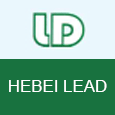Products Categories
| CAS No.: | 50-70-4 |
|---|---|
| Name: | Sorbitol |
| Article Data: | 335 |
| Molecular Structure: | |
|
|
|
| Formula: | C6H14O6 |
| Molecular Weight: | 182.174 |
| Synonyms: | Sorbitol syrup C;Sorbitur;Sorbogem 712;Sorbostyl;Sorbitol Powder;Sorbitol (7CI);(-)-Sorbitol;C*Sorbidex;C*Sorbidex P 16616;CSorbidex 16100;Cholaxine;Cystosol;D-Sorbit 50M;Glucarine;Glucitol;Karion;Karioninstant;L-Gulitol;Multitol;NSC 25944;Neosorb;Neosorb 20/60DC;Neosorb 70/02SB;Neosorb 70/70;Neosorb P 60;Nivitin;Resulax;Sionit K;Sionite;Siosan;Sorbex R;Sorbex Rp;Sorbex S;Sorbidex S 16601;Sorbit LTSP;Sorbit T 70;Sorbit W-Powder;Sorbit WP;Sorbitol F;Sorbitol FP;Sorbitol S; |
| EINECS: | 200-061-5 |
| Density: | 1.596 g/cm3 |
| Melting Point: | 98-100 °C(lit.) |
| Boiling Point: | 494.9 °C at 760 mmHg |
| Flash Point: | 292.5 °C |
| Solubility: | soluble in water |
| Appearance: | white crystalline powder |
| Hazard Symbols: |
 Xi Xi
|
| Risk Codes: | 36/37/38 |
| Safety: | 8-36-26 |
| PSA: | 121.38000 |
| LogP: | -3.58540 |
- 5156-58-1N-(1-Benzyl-4-pipperidinyl)-N-phenylpropanamide HCl
- 81281-59-67-Benzylideneaminotheophylline
- 82993-81-5D-threo-Ritalinic acid hydrochloride
- 73441-42-6METHYL-5-CHLORO-2,2-DIMETHYLVALERATE
- 68439-39-4Poly(oxy-1,2-ethanediyl), alpha-(2-ethylhexyl)-omega-hydroxy-,
- 852475-26-4MC1568
- 958254-66-51H-Imidazo[4,5-b]pyridine-2-carboxaldehyde, 1-methyl-, hydrochloride
- 99170-93-1N-Methyl-2-oxazolamine
- 717878-06-31-(4-fluorophenyl)-4-nitro-1H-imidazole
- 914458-26-7[5-(2-fluorophenyl)-1-pentyl-1H-pyrrol-3-yl]-1-naphthalenyl-Methanone

| Conditions | Yield |
|---|---|
| With hydrogen In water at 120℃; under 15001.5 Torr; for 1h; | 100% |
| With hydrogen; ruthenium embedded in mesoporous carbon In water at 120℃; under 15001.5 Torr; for 2h; Catalytic behavior; Reagent/catalyst; Inert atmosphere; Autoclave; | 99.3% |
| With hydrogen at 120℃; under 22502.3 Torr; for 2h; high pressure reactor; | 94.43% |
- 97-30-3, 617-04-9, 709-50-2, 1824-94-8, 2152-78-5, 3396-99-4, 6819-48-3, 18469-06-2, 20550-04-3, 22277-65-2, 29411-57-2, 35437-40-2, 35437-43-5, 36191-11-4, 36191-12-5, 39598-79-3, 39598-80-6, 39598-89-5, 51023-63-3, 51223-62-2, 51224-38-5, 51224-39-6, 51224-40-9, 51224-41-0, 51819-81-9, 51819-82-0, 51819-83-1, 56688-81-4, 62279-53-2, 64281-79-4, 64281-80-7, 64912-19-2, 66101-73-3, 78184-90-4, 84368-39-8, 84368-40-1, 84368-41-2, 92142-37-5, 93302-26-2, 103421-28-9, 115794-08-6, 3149-68-6
methyl D-glucopyranoside

- 50-70-4
D-sorbitol

| Conditions | Yield |
|---|---|
| With ruthenium-carbon composite; hydrogen In water at 180℃; under 43958.7 Torr; for 3h; Temperature; Autoclave; | 100% |

| Conditions | Yield |
|---|---|
| With hydrogen In water at 100℃; under 37503.8 Torr; for 2h; Catalytic behavior; Reagent/catalyst; Pressure; Time; Autoclave; | 99% |
| With water; hydrogen at 120℃; under 22502.3 Torr; for 5h; Catalytic behavior; Reagent/catalyst; Temperature; Pressure; Time; High pressure; | 98% |
| With formic acid; sodium formate; C22H26ClN2Rh(1+)*BF4(1-) In water; toluene at 80℃; for 48h; pH=4.4; Temperature; Inert atmosphere; Schlenk technique; Sealed tube; | 95% |
- 133-99-3, 490-37-9, 2152-98-9, 4482-75-1, 5965-66-2, 13299-27-9, 13360-52-6, 14641-93-1, 15548-43-3, 16462-44-5, 16984-36-4, 16984-38-6, 20869-27-6, 22688-72-8, 27452-49-9, 29276-55-9, 30608-12-9, 34481-13-5, 37169-60-1, 37169-64-5, 64234-01-1, 64234-02-2, 75281-88-8, 80446-85-1, 84413-57-0, 92344-56-4, 93221-87-5, 93301-77-0, 94799-29-8, 100427-98-3, 100428-00-0, 101312-82-7, 102046-24-2, 102046-25-3, 109432-00-0, 109432-02-2, 109432-04-4, 109432-08-8, 135268-49-4, 138231-26-2, 140461-59-2, 145414-22-8, 145414-26-2, 146339-75-5, 146339-76-6, 149116-55-2, 6363-53-7
Maltose

- 50-70-4
D-sorbitol

| Conditions | Yield |
|---|---|
| With zinc(II) chloride tetrahydrate; 5% active carbon-supported ruthenium; hydrogen at 130℃; under 30003 Torr; for 6h; Time; | 97% |

| Conditions | Yield |
|---|---|
| With water; hydrogen at 180℃; under 37503.8 Torr; for 5h; Catalytic behavior; Pressure; Autoclave; | 96.2% |
| Multi-step reaction with 2 steps 1: hydrogen; water / 37503.8 Torr / Autoclave 2: hydrogen / water / 5 h / 180 °C / 52505.3 Torr / Autoclave View Scheme | |
| Multi-step reaction with 2 steps 1: hydrogen; water / 37503.8 Torr / Autoclave 2: hydrogen; 5 wt% ruthenium/carbon / water / 5 h / 180 °C / 52505.3 Torr / Autoclave View Scheme |
- 13360-52-6
Cellobiose

- 50-70-4
D-sorbitol

| Conditions | Yield |
|---|---|
| With hydrogen In water at 150℃; under 15001.5 Torr; for 10h; Reagent/catalyst; Temperature; Autoclave; | 95.1% |
| With water; hydrogen at 180℃; under 37503.8 Torr; for 5h; Autoclave; | 91.1% |
| With water; hydrogen at 180℃; under 37503.8 Torr; for 5h; Reagent/catalyst; High pressure; | 86% |

| Conditions | Yield |
|---|---|
| With hydrogen In butan-1-ol at 120℃; under 26252.6 Torr; for 10h; Reagent/catalyst; Pressure; Temperature; Solvent; | A 93% B 5% |
| With hydrogen In butan-1-ol at 120℃; under 18751.9 Torr; for 5h; Pressure; Reagent/catalyst; Temperature; Solvent; | A 62% B 14% |
| With Butane-1,4-diol; Cu3Ni3Al2 In water at 149.84℃; pH=9 - 10; | A 60% B 16% |

| Conditions | Yield |
|---|---|
| With hydrogen In water at 19.84 - 189.84℃; under 37503.8 Torr; for 3h; Reagent/catalyst; Temperature; Time; Autoclave; | A n/a B 91.5% |
- 19159-25-2
sucrose octakis(trimethylsilyl) ether

A
- 69-65-8
mannitol

B
- 50-70-4
D-sorbitol

C
- 154-58-5
1,5-anhydro-D-glucitol

| Conditions | Yield |
|---|---|
| Stage #1: sucrose octakis(trimethylsilyl) ether With bis(pentafluorophenyl)borinic acid; 1,1,3,3-tetramethyldisilazane In chloroform-d1 at 25℃; for 3h; Inert atmosphere; Glovebox; Stage #2: In methanol Inert atmosphere; Glovebox; | A n/a B n/a C 90% |

- 133-99-3, 490-37-9, 2152-98-9, 4482-75-1, 5965-66-2, 13299-27-9, 13360-52-6, 14641-93-1, 15548-43-3, 16462-44-5, 16984-36-4, 16984-38-6, 20869-27-6, 22688-72-8, 27452-49-9, 29276-55-9, 30608-12-9, 34481-13-5, 37169-60-1, 37169-64-5, 64234-01-1, 64234-02-2, 75281-88-8, 80446-85-1, 84413-57-0, 92344-56-4, 93221-87-5, 93301-77-0, 94799-29-8, 100427-98-3, 100428-00-0, 101312-82-7, 102046-24-2, 102046-25-3, 109432-00-0, 109432-02-2, 109432-04-4, 109432-08-8, 135268-49-4, 138231-26-2, 140461-59-2, 145414-22-8, 145414-26-2, 146339-75-5, 146339-76-6, 149116-55-2
Maltose

A
- 69-65-8
mannitol

B
- 50-70-4
D-sorbitol

| Conditions | Yield |
|---|---|
| With hydrogen; Nafion; ruthenium In water at 150℃; under 37503 Torr; for 5h; | A 7.1% B 87.6% |
- 1122-58-34-Dimethylaminopyridine
- 162401-32-3Benzamide,3-(cyclopropylmethoxy)-N-(3,5-dichloro-4-pyridinyl)-4-(difluoromethoxy)-
- 110-63-41,4-Butanediol
- 27176-87-0Dodecyl benzene sulfonic acid
- 67-48-1Choline chloride
- 2058-46-0Oxytetracycline hydrochloride
- 8009-03-8Petrolatum
- 108-46-3Resorcinol
- 104987-11-3Tacrolimus
- 141-53-7Sodium formate
- 8001-54-5Quaternary ammonium compounds, alkylbenzyldimethyl, chlorides
- 9003-39-8Povidone
- 10161-34-9Trenbolone acetate
- 402957-28-2Telaprevir
- 68-19-9Cyanocobalamin
Consensus Reports
Reported in EPA TSCA Inventory. EPA Genetic Toxicology Program.
Specification
The IUPAC name of Sorbitol is (2R,3R,4R,5S)-hexane-1,2,3,4,5,6-hexol. With the CAS registry number 50-70-4, it is also named as D-Glucitol. The product's categories are Biochemistry; Glucose; Sugar Alcohols; Sugars; Food additives; Dextrins, Sugar & Carbohydrates; Food & Flavor Additives. It is white crystalline powder which is soluble in water, glycerol, propylene glycol, slightly soluble in methanol, ethanol, acetic acid, phenol and acetamide solution. Additionally, Sorbitol should be sealed in the container and stored in the cool and dry place.
The other characteristics of this product can be summarized as: (1)ACD/LogP: -4.67; (2)# of Rule of 5 Violations: 1; (3)ACD/LogD (pH 5.5): -4.67; (4)ACD/LogD (pH 7.4): -4.67; (5)ACD/BCF (pH 5.5): 1; (6)ACD/BCF (pH 7.4): 1; (7)ACD/KOC (pH 5.5): 1; (8)ACD/KOC (pH 7.4): 1; (9)#H bond acceptors: 6; (10)#H bond donors: 6; (11)#Freely Rotating Bonds: 11 ; (12)Index of Refraction: 1.597; (13)Molar Refractivity: 38.89 cm3; (14)Molar Volume: 114.1 cm3; (15)Polarizability: 15.41×10-24 cm3; (16)Surface Tension: 99.8 dyne/cm; (17)Enthalpy of Vaporization: 87.81 kJ/mol; (18)Vapour Pressure: 7.22E-12 mmHg at 25°C; (19)Rotatable Bond Count: 5; (20)Exact Mass: 182.079038; (21)MonoIsotopic Mass: 182.079038; (22)Topological Polar Surface Area: 121; (23)Heavy Atom Count: 12; (24)Complexity: 105.
Preparation of Sorbitol: Adding 53% glucose solution (previously adjusted ph to 8.2 ~ 8.4) and Ni - Al catalyst containing glucose 0.1% in autoclave. Then reacting after draining the air, and controlling the temperature at 150 °C and the pressure at 3.5MPa.
.gif)
Uses of Sorbitol: It has many uses, such as follows:
1. It is a sugar substitute often used in diet foods (including diet drinks and ice cream) and sugar-free chewing gum, mints and cough syrups.
2. It can be used as a non-stimulant laxative as either an oral suspension or suppository.
3. It is used in bacterial culture media to distinguish Escherichia coli 0154:H7.
4. It is often used in modern cosmetics as a humectant and thickener. Sorbitol is often used in mouthwash and toothpaste. Some transparent gels can only be made with sorbitol as it has a refractive index sufficiently high for transparent formulations.
When you are using this chemical, please be cautious about it as the following:
It is irritating to eyes, respiratory system and skin. In case of contact with eyes, rinse immediately with plenty of water and seek medical advice. If you want to contact this product, you must wear suitable protective clothing.
People can use the following data to convert to the molecule structure.
1. SMILES:O[C@H]([C@@H](O)CO)[C@H](O)[C@H](O)CO
2. InChI:InChI=1/C6H14O6/c7-1-3(9)5(11)6(12)4(10)2-8/h3-12H,1-2H2/t3-,4+,5-,6-/m1/s1
3. InChIKey:FBPFZTCFMRRESA-JGWLITMVBN
The following are the toxicity data which has been tested.
| Organism | Test Type | Route | Reported Dose (Normalized Dose) | Effect | Source |
|---|---|---|---|---|---|
| mouse | LD50 | intraperitoneal | 15gm/kg (15000mg/kg) | Proceedings of the Society for Experimental Biology and Medicine. Vol. 35, Pg. 98, 1936. | |
| mouse | LD50 | intravenous | 9480mg/kg (9480mg/kg) | Yakkyoku. Pharmacy. Vol. 32, Pg. 1367, 1981. | |
| mouse | LD50 | oral | 17800mg/kg (17800mg/kg) | Yakkyoku. Pharmacy. Vol. 32, Pg. 1367, 1981. | |
| mouse | LD50 | subcutaneous | 24gm/kg (24000mg/kg) | Drugs in Japan Vol. -, Pg. 607, 1990. | |
| rat | LD50 | intravenous | 7100mg/kg (7100mg/kg) | FAO Nutrition Meetings Report Series. Vol. 53A, Pg. 498, 1974. | |
| rat | LD50 | oral | 15900mg/kg (15900mg/kg) | FAO Nutrition Meetings Report Series. Vol. 53A, Pg. 498, 1974. | |
| rat | LD50 | subcutaneous | 29600mg/kg (29600mg/kg) | Drugs in Japan Vol. -, Pg. 607, 1990. | |
| women | TDLo | oral | 1700mg/kg/D (1700mg/kg) | GASTROINTESTINAL: "HYPERMOTILITY, DIARRHEA" | American Journal of Digestive Diseases. Vol. 23, Pg. 568, 1978. |
-
Premium Related Products




